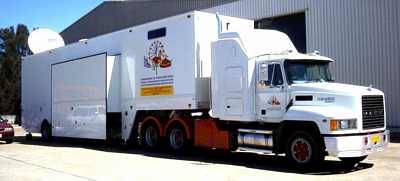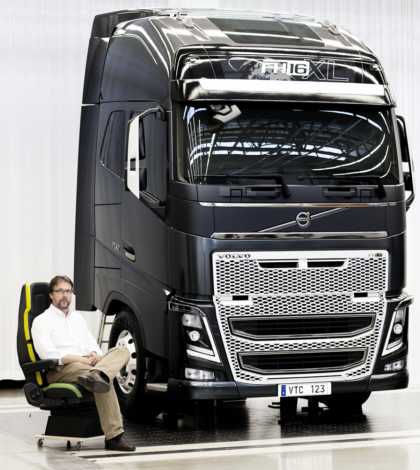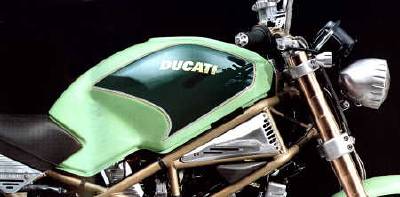 Many families follow the sequence of agricultural shows that are held across the extent of rural Australia. This involves extended periods of travel over vast distances across inhospitable country to remote and isolated communities. Communities that enjoy few of the benefits enjoyed by the urban areas of Australia. Such a lifestyle obviously puts the children of these families at a disadvantage in terms of conventional education.
Many families follow the sequence of agricultural shows that are held across the extent of rural Australia. This involves extended periods of travel over vast distances across inhospitable country to remote and isolated communities. Communities that enjoy few of the benefits enjoyed by the urban areas of Australia. Such a lifestyle obviously puts the children of these families at a disadvantage in terms of conventional education.
The mobile classrooms, designed by Michael Waddington of Integrated Design Systems using Autodesk’s AutoCAD and Inventor applications, were inspired by similar facilities used in the provision of educational services to fairground students in Europe.
The extended classrooms, constructed by Brimarco Industries in Ballarat, are built on low profile tandem semitrailers and feature ceiling, walls and a floor that extend to create a room measuring 6.5 metres by 6.5 metres with seating for up to 32 children and two Teachers. Each unit is equipped with a diesel/electrical alternator power generator mounted on the Mack truck prime movers, eight networked laptop computers for use by staff and students, and a 1.8 metre satellite dish that links to the Queensland Education Department network and the internet. The deployment is fully automated using a complex hydraulic system.
There are two classroom units, which annually travel the two main show circuits throughout Australia. While both classroom units commence each year in New South Wales (NSW), one classroom travels north into Queensland from January to July along the eastern seaboard to Cairns, returning to Brisbane in August, then continues to Adelaide and into Victoria to complete the school year. The second classroom unit supports the country shows in NSW, travelling north from May to August throughout Queensland and the Northern Territory, then returns south to support country and regional shows in NSW and Victoria from September to December.
Each classroom is staffed by a teaching team of two dedicated and talented teachers and supported by Unit Support Officers, who drive the vehicles and deploy the classrooms on a weekly basis, teacher aide and provide the necessary maintenance required by this unique school.
Around 30 children travel with each circuit, ranging in age from pre-school through to year six, including some children with physical disabilities. These students previously completed their school studies by correspondence, relying on parents to help and motivate them or attend boarding schools or hostels, but now they enjoy face-to-face lessons with qualified teachers.
Once the funding was arranged the Brisbane-based project managers, Brown & Root Pty Ltd and Education Queensland prepared a specification and let a tendered contract to Brimarco Industries to design and build the two units. “It was then that I received the drawing and was asked to make it work,” he said.
One of Australia’s leading design engineers for large road transports, Mr Ken Baldock supervised the design and approved the units to the Australian Design Rules for large road transport. Mr Waddington applied just-in-time principles to design the main trailer frame first so that production could begin while he was still planning the interior layout.
An AutoCAD user since the 1970s, Mike Waddington migrated to Autodesk’s new Inventor application after its launch in November 1999, using it as his main design tool and supplementing its capabilities with AutoCAD 2000 and 3D Studio VIZ.
“Inventor was ideal for this kind of project not only because it provided the three dimensional visualisation I needed, but because it included the weight and mass properties that were so essential to the design, since the final vehicle had to be certified for use on Australian roads,” he said.
 “Inventor also gave me useful tools like near collision fitting, which meant that if two walls were going to clash one immediately turned red to highlight the problem. This was critical because I was trying to design the largest possible space that could be created with hydraulics and needed Inventor’s animation capabilities to prove that the various elements of the design would all fit together.”
“Inventor also gave me useful tools like near collision fitting, which meant that if two walls were going to clash one immediately turned red to highlight the problem. This was critical because I was trying to design the largest possible space that could be created with hydraulics and needed Inventor’s animation capabilities to prove that the various elements of the design would all fit together.”
Each prime mover features an automatic levelling system with hydraulic stabilisers that can extend to the ground to ensure a balanced platform for the deployment of the satellite dish. Once the vehicle has been stabilised, the automated hydraulics under PLC and computer control can be activated to extend the central classroom structure.
“The base section of the classroom moves out a distance of 1.6 metres, then the roof lifts up, the floor drops down and the side walls lift out. The outer wall swings onto the side wall to create a box and the roof then lowers down to sit on top,” explained Mr Waddington.
“This extension adds 3.6 metres to the size of the classroom, while a smaller section also extends out the other side of the vehicle to provide a storage facility for resources, television, VCR, photocopier, phone, facsimile and book trolleys.”
Mr Waddington developed rendered drawings within Inventor for viewing by the Education Department as part of the approval process and later animated the entire extension process using Autodesk 3D Studio VIZ to demonstrate how the classroom would work.
“This was an extremely complex design with over 9,500 different components, all of which had to be carefully considered in terms of their contribution to the vehicle’s weight and mass, as well as their impact on its centre of gravity,” Mr Waddington said.
Inventor also allowed Mr Waddington to turn the design around easily and look at it from different angles, in addition to providing him with the option of making some sections invisible to increase speed and usability.
“A semi-trailer is only allowed up to 17.5 tonnes over an air bag suspension on the rear wheels and just 16.5 tonnes over the front wheels, so I had to keep a close watch on the weight at all times. I also had to balance the load to ensure the mass was distributed within five per cent along the centre line or it would compromise the stability of the vehicle.
“Inventor was an enormous help in managing the weight and enabled me to test the design to ensure the final vehicle would meet the necessary standards for certification.”
 Mr Waddington worked with one of Autodesk’s Systems Centres, Envision IT, which provided the necessary hardware and software as well as training and technical support to help him take full advantage of the extensive functionality within the Autodesk products.
Mr Waddington worked with one of Autodesk’s Systems Centres, Envision IT, which provided the necessary hardware and software as well as training and technical support to help him take full advantage of the extensive functionality within the Autodesk products.
“Envision IT helped to set up and configure the system, trained me in its use and then provided on-going support whenever I needed it. Even though Inventor is highly intuitive, the complexities of this project and short lead times involved meant I needed to draw on their expertise on a number of occasions,” he said.
The hydraulic and electrical schematics for the vehicles were completed in AutoCAD 2000, which meant they were easily accessible to anyone operating the AutoCAD platform.
Brimarco Industries Pty Ltd a specialised large semi trailer manufacturer built the two mobile classroom units along with two teacher accommodation caravans.
Several different organizations were involved in working with and approving the design, including the Brisbane-based project managers, Brown & Root, Transport Systems Technology of Victoria for ADR, Sangus Pty Ltd for electronics and automation systems, Ross Hydraulics Pty Ltd and various people within the Queensland and Federal Governments.
“Many of the files were simply exchanged via email so it didn’t matter that the people involved in the project were located thousands of miles apart,” said Mr Waddington.
“As the industry standard, AutoCAD enjoys such a strong installed base that by keeping it within the Autodesk family we ensured that everyone could accept and read the files.”
Mr Waddington believes the Australian mobile classrooms are a world first in terms of their scale and complexity and said the children associated with the show circuit will now receive the best possible schooling while travelling around the country.
“At 13.7 metres long, by 2.5 metres high and 4.25 metres high, these vehicles are the largest you can put on the road at this point in time, so we’ve packed the maximum functionality and technology into that available space. Thanks to Inventor, the result is a classroom facility which sets new standards in mobile education,” he said.
Brown & Root







